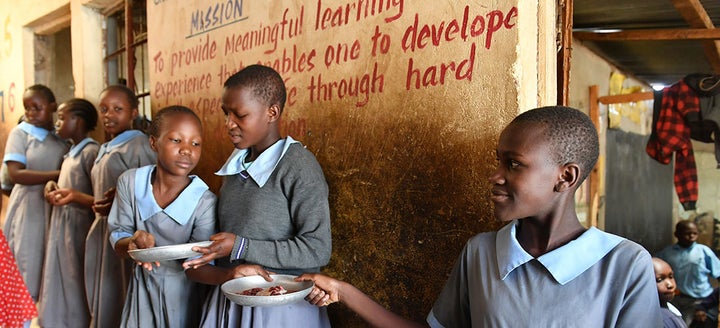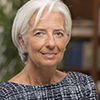
Senior class in Nairobi, Kenya. In many countries with IMF-supported programs public spending on education grew significantly faster than the economy of the country (photo: Xinhua/Sipa USA/Newscom)
IMF-supported programs are designed to help economies get back on their feet, but what about their impact on social spending?
Our latest research shows that health and education spending have typically been protected in low-income country programs. In fact, an analysis of more than 25 years of data (1988–2014) suggests that public health spending, as a share of GDP, has on average remained unchanged, while public education spending has increased by 0.32 percentage points.
The findings underscore the IMF’s strong commitment to protect health and education spending and the most vulnerable during challenging economic reforms. Indeed, in many countries with IMF-supported programs—from Tanzania, to Honduras, to the Kyrgyz Republic—per capita public spending on health and education has significantly outpaced the growth of per capita income.
Safeguarding social spending is critical because women, young people, seniors, and the poor often lack the political leverage to promote their economic well-being. By protecting the health and skills of vulnerable groups, growth will be stronger, more durable, and more inclusive.
Last year, we extended zero interest rates on all IMF concessional lending to help low-income countries deal with future shocks and achieve the Sustainable Development Goals. But cheaper financing alone is not enough to ensure more durable and inclusive growth.
The success of low-income country programs increasingly depends on two key factors—(i) minimum levels of government spending on health, education, and social safety nets; and (ii) specific reform measures to protect vulnerable groups.
Our data indicate that minimum financing levels were included in virtually all low-income country programs, and that more than two-thirds of these program targets were met. In other IMF-supported programs, measures were taken to strengthen social safety nets. In Honduras, for example, the government used an extended cash transfer to cushion the impact of its fiscal adjustment (2014).
More broadly, IMF-supported programs have helped boost social spending by unlocking additional donor financing and by encouraging tax reforms that create stronger and more reliable sources of government revenue.
We also provide hands-on technical assistance in this area, helping more than 130 countries per year to generate higher public revenue that can be used for fresh investment in hospitals, schools, and poverty reduction.
I am glad to say that the Fund’s work has made a difference in low-income countries in recent years, which has been acknowledged across our membership. But we also recognize that we need to work on improvements in several areas:
First, we need to define program targets more explicitly, building on our recent experiences. In Kenya, for example, targets included the cost of anti-retroviral treatments, spending on primary and secondary public education, and cash transfers to vulnerable children and seniors. By providing these specific goals, Kenya’s 2011 program became more targeted and effective. We want to do more of this.
Second, we need to improve the design of social safety nets. A good example is Haiti, where programs have pushed up expenditure for poverty reduction, and where the IMF’s emergency loan in the wake of Hurricane Matthew was aimed at rebuilding basic social services. Our goal is to increase the number of programs with concrete measures to protect vulnerable groups.
Third, we need to deliver better outcomes by stepping up our collaboration with governments and development partners. In Bangladesh, for instance, we have worked closely with the World Bank to gauge the impact of higher food and energy prices on the social safety net. By bringing together the best expertise, we know that we can significantly improve the quality of our own economic analysis and program design.
The final step, of course, is to combine these “three D’s” with more agility. For example, the IMF moved swiftly to provide the Ebola-affected countries with $380 million in financial assistance — “cash in the bank” to help impacted countries fight this devastating disease.
As the African proverb goes: “If you want to go fast, go alone. If you want to go far, go together.”
I recognize that there is more work to be done to achieve greater inclusiveness and economic fairness. Working closely with our partners and member countries, we will build on the progress made so far.
